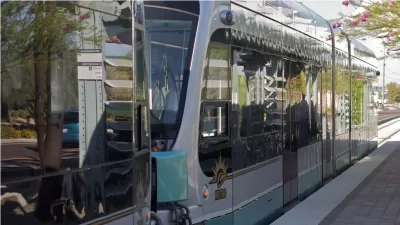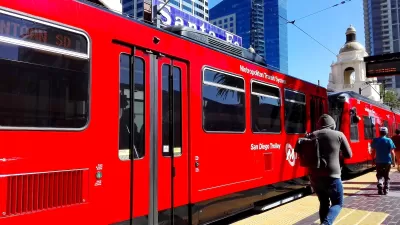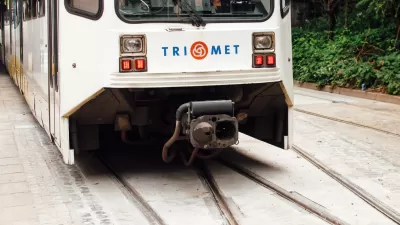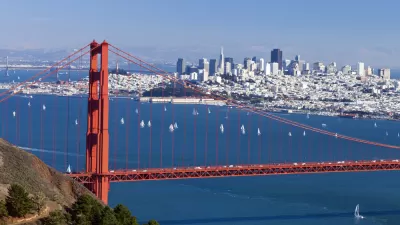The answer to the question in the headline is “not very.” Thirty years into the initial experiment, however, light rail has not been the game changer it was hoped to be.

Yonah Freemark details the complicated legacy of the light rail investments of the 1980s, which have not been very successful in increasing the share of trips taken on transit. Buffalo, Portland, Sacramento, San Diego, and San Jose opened light rail in the 1980s, “[yet] it doesn't take much digging to find that over the past thirty years, these initial five systems in themselves neither rescued the center cities of their respective regions nor resulted in higher transit use — the dual goals of those first-generation lines.”
“According to an analysis of Census data, in four of the five cities with new light rail lines, the share of regional workers choosing to ride transit to work declined, and the center city's share of the urbanized area population declined, too,” reports Freemark. San Jose was the only exception.
Thus, light rail investments do not automatically result in increased transit use. In fact, “Two of the initial light rail metros, Buffalo and Portland, had significantly higher transit mode shares in 1980 (7.9 and 9.7 percent, respectively) than they did in 2012.”
Freemark’s point is not to call for an end to light rail investments. Rather, he insists that cities cut back on the conflicting policies of continuing highway expansion, and develop a consistent transportation strategy: “Each region also built free highways during the period (I-990 in Buffalo, I-205 in Portland, US 50 in Sacramento, CA 54 in San Diego, and CA 237 in San Jose), and each continued to sprawl (including Portland, despite its urban growth boundary). These conflicting policies had as much to do with light rail's mediocre outcomes as the trains themselves — if not more.”
FULL STORY: Have U.S. Light Rail Systems Been Worth the Investment?

Alabama: Trump Terminates Settlements for Black Communities Harmed By Raw Sewage
Trump deemed the landmark civil rights agreement “illegal DEI and environmental justice policy.”

Planetizen Federal Action Tracker
A weekly monitor of how Trump’s orders and actions are impacting planners and planning in America.

Why Should We Subsidize Public Transportation?
Many public transit agencies face financial stress due to rising costs, declining fare revenue, and declining subsidies. Transit advocates must provide a strong business case for increasing public transit funding.

Understanding Road Diets
An explainer from Momentum highlights the advantages of reducing vehicle lanes in favor of more bike, transit, and pedestrian infrastructure.

New California Law Regulates Warehouse Pollution
A new law tightens building and emissions regulations for large distribution warehouses to mitigate air pollution and traffic in surrounding communities.

Phoenix Announces Opening Date for Light Rail Extension
The South Central extension will connect South Phoenix to downtown and other major hubs starting on June 7.
Urban Design for Planners 1: Software Tools
This six-course series explores essential urban design concepts using open source software and equips planners with the tools they need to participate fully in the urban design process.
Planning for Universal Design
Learn the tools for implementing Universal Design in planning regulations.
Caltrans
Smith Gee Studio
Institute for Housing and Urban Development Studies (IHS)
City of Grandview
Harvard GSD Executive Education
Toledo-Lucas County Plan Commissions
Salt Lake City
NYU Wagner Graduate School of Public Service





























